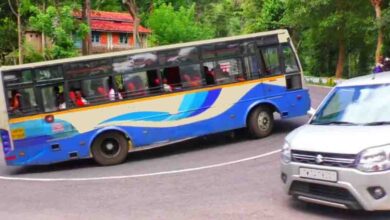Take lesson from Odisha model for disaster management: Nautiyal

Thursday, 24 August 2023 | PNS | DEHRADUN
Considering frequent calamities and accidents in Uttarakhand, the experts opine that the State government should take inspiration from the Odisha model for disaster management. The State is vulnerable to various natural disasters like landslides and flash floods and changing climatic conditions are likely to increase the intensity and frequency of such disasters. In the past two months, the State witnessed major disasters and accidents that caused significant loss of lives and property. The founder of the Dehradun based Social Development for Communities (SDC) Foundation, Anoop Nautiyal mentioned in the monthly report of Uttarakhand Disaster and Accident Synopsis (UDAS) for July that new cases of land subsidence have been reported in Joshimath with the intensification of the monsoon. The locals have reportedly alleged that the situation there has worsened with time but the government is not taking serious steps. He said that according to a study by geoscientists, the situation in Joshimath has arisen due to rapid population growth, unregulated basic infrastructure development, inadequate drainage, excavation of roads, and improper waste disposal. The report also states that in recent decades, significant basic infrastructure development activities have been observed in the Himalayan region which is having adverse effects on the ecology and stability of the area. The SDC’s report also highlighted tilting observed in Gopeshwar’s Gopinath Temple which is a 11th century shrine. A team from the Archaeological Survey of India (ASI) recently found foul smelling sewage inside the sanctum sanctorum of the temple. The ASI officials have also written to the administration about the grave concern of waterlogging and damaged sewer lines near the temple due to which sewage has reached the sanctum sanctorum which can pose a massive threat in future, as per the report. Besides this, recurring landslides and land erosion from Mansa Devi hill during the monsoon have also become a grave concern for the safety of 50,000 residents that reside in Brahmapuri, Khadkhnadi, Nayi Basi, Jogia Mandi and Bhimgoda areas of the district. Residents of Uttarkashi’s Mastadi village are also observing land subsidence and cracks in their homes which are getting worse with time like Joshimath. The water is seeping inside and fresh cracks have appeared in houses suspected to be caused by land subsidence following heavy rain. A team from the geological department recently conducted a survey of the village and will soon submit a report to the government, as per the report. Nautiyal said that Uttarakhand needs to learn from the Odisha model for disaster management which provides essential lessons on strengthening disaster-resilient governance, investing in preparedness, scenario planning and enhancing understanding and spread of disaster risk. The state administration needs to take inspiration from Odisha’s model to make a plan that covers disaster risk reduction, mitigation, response, recovery and better reconstruction as it can offer valuable insights into various aspects. The increasing human settlements in vulnerable areas with increasing urban population also pose challenges to the disaster management mechanisms of the State that need to be considered too while making a disaster management plan. He said that a thorough understanding of Odisha’s model can help in the reduction of death and devastation due to the frequent disasters and accidents in the State.






